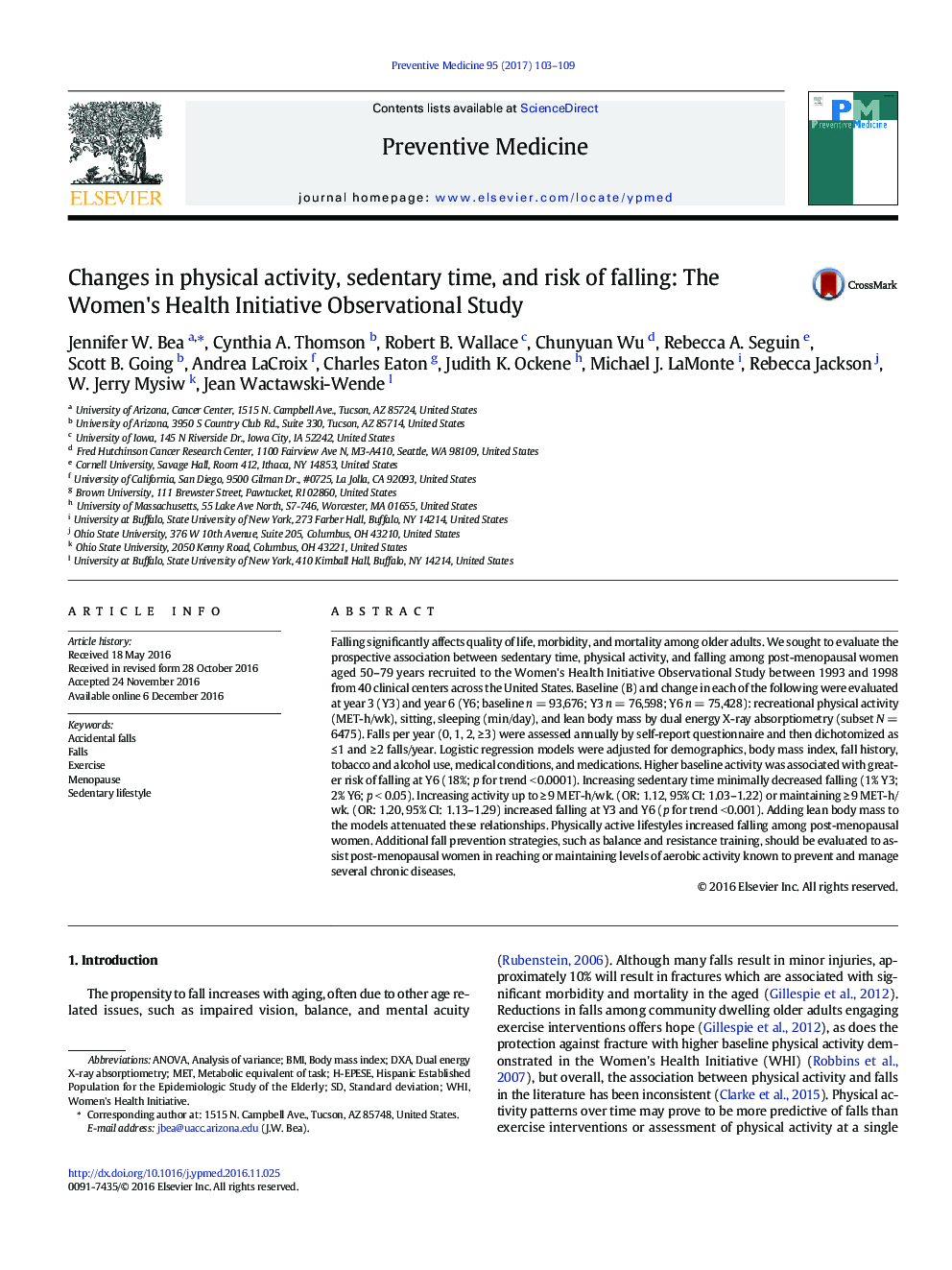| Article ID | Journal | Published Year | Pages | File Type |
|---|---|---|---|---|
| 5635817 | Preventive Medicine | 2017 | 7 Pages |
â¢Increasing physical activity (PA) may be associated with a greater risk of falling among postmenopausal women.â¢Increasing sedentary time may slightly decrease risk of falling among postmenopausal women.â¢Falls risk must be weighed against PA benefits for prevention of chronic diseases among postmenopausal women.â¢Further research is needed to improve safety and support continued PA with aging among postmenopausal women.
Falling significantly affects quality of life, morbidity, and mortality among older adults. We sought to evaluate the prospective association between sedentary time, physical activity, and falling among post-menopausal women aged 50-79 years recruited to the Women's Health Initiative Observational Study between 1993 and 1998 from 40 clinical centers across the United States. Baseline (B) and change in each of the following were evaluated at year 3 (Y3) and year 6 (Y6; baseline n = 93,676; Y3 n = 76,598; Y6 n = 75,428): recreational physical activity (MET-h/wk), sitting, sleeping (min/day), and lean body mass by dual energy X-ray absorptiometry (subset N = 6475). Falls per year (0, 1, 2, â¥Â 3) were assessed annually by self-report questionnaire and then dichotomized as â¤Â 1 and â¥Â 2 falls/year. Logistic regression models were adjusted for demographics, body mass index, fall history, tobacco and alcohol use, medical conditions, and medications. Higher baseline activity was associated with greater risk of falling at Y6 (18%; p for trend < 0.0001). Increasing sedentary time minimally decreased falling (1% Y3; 2% Y6; p < 0.05). Increasing activity up to â¥Â 9 MET-h/wk. (OR: 1.12, 95% CI: 1.03-1.22) or maintaining â¥Â 9 MET-h/wk. (OR: 1.20, 95% CI: 1.13-1.29) increased falling at Y3 and Y6 (p for trend < 0.001). Adding lean body mass to the models attenuated these relationships. Physically active lifestyles increased falling among post-menopausal women. Additional fall prevention strategies, such as balance and resistance training, should be evaluated to assist post-menopausal women in reaching or maintaining levels of aerobic activity known to prevent and manage several chronic diseases.
